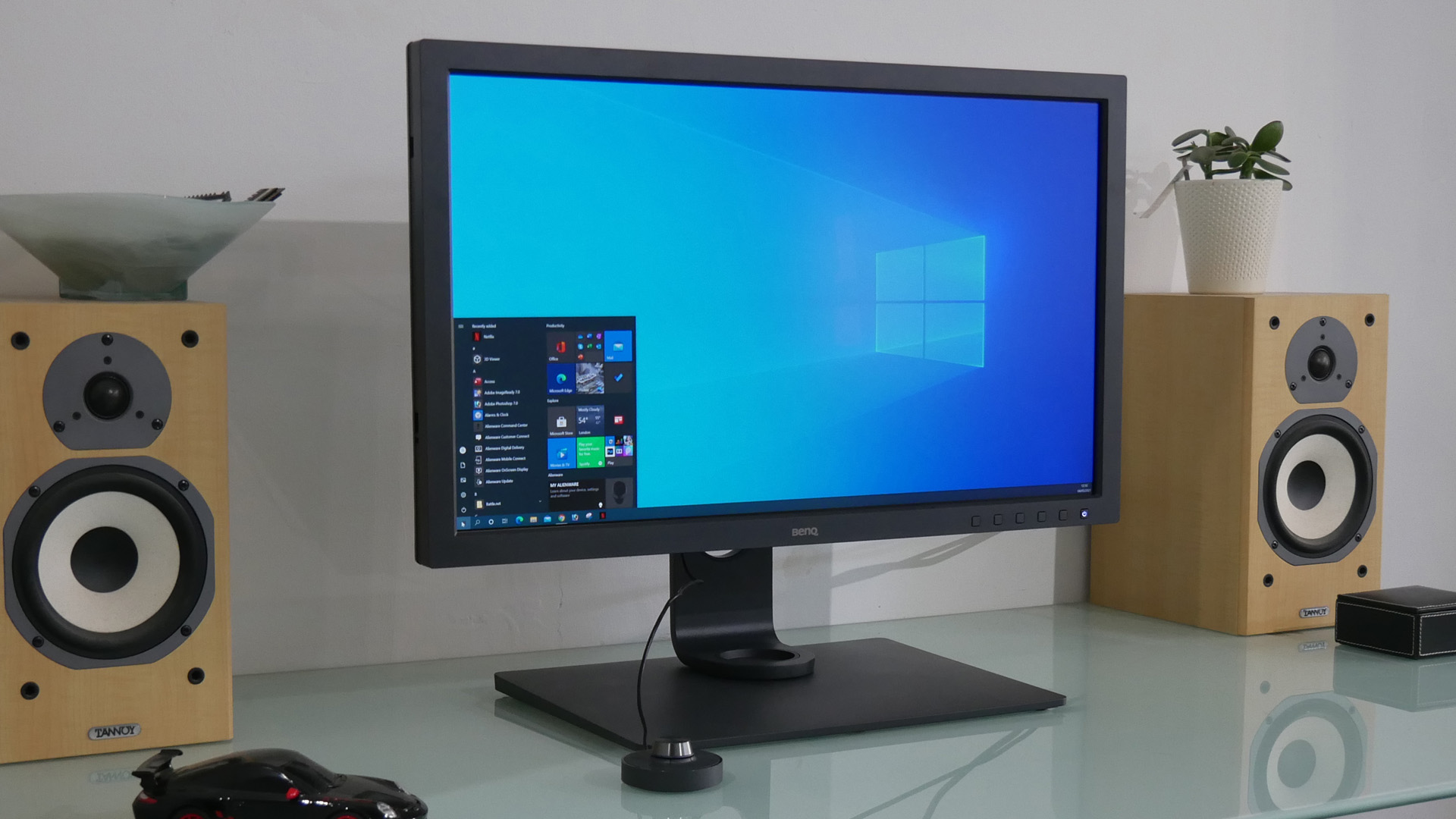TechRadar Verdict
BenQ’s new 27-inch IPS monitor is design to undercut the pros in the 4K content creation monitor market.
Pros
- +
Glorious 4K IPS panel
- +
Wide ranging gamut support
- +
USB-C connectivity
Cons
- -
Limited HDR performance
- -
Color coverage good rather than excellent
- -
Old-school styling
Why you can trust TechRadar
Pro-level business monitors delivering wide color coverage and support for content-critical color spaces used to cost megabucks. The new 27-inch BenQ SW271C promises all that and a whole lot more. And while it isn’t exactly cheap, it is relatively affordable given the potential value it offers for professional 4K workflows.
Overall: 4
Design: 3
Features: 4
Performance: 4
Usability: 5
Value: 4
The BenQ SW271C’s key features center around color coverage. There’s broad support for numerous color spaces, including Adobe RGB and DCI-P3, plus critical features like 10-bit per channel color, a 16-bit LUT and an image processing chip with hardware calibration support.
To those core abilities you can add native 4K or UHD resolution, USB Type-C connectivity with device charging and other extras like a hotkey puck and shading hood. It’s a pretty comprehensive package. The only obvious omission is full HDR capability. The BenQ SW271C will accept and process an HDR input. But it lacks local dimming and isn’t bright enough for true HDR rendering or HDR content mastering.
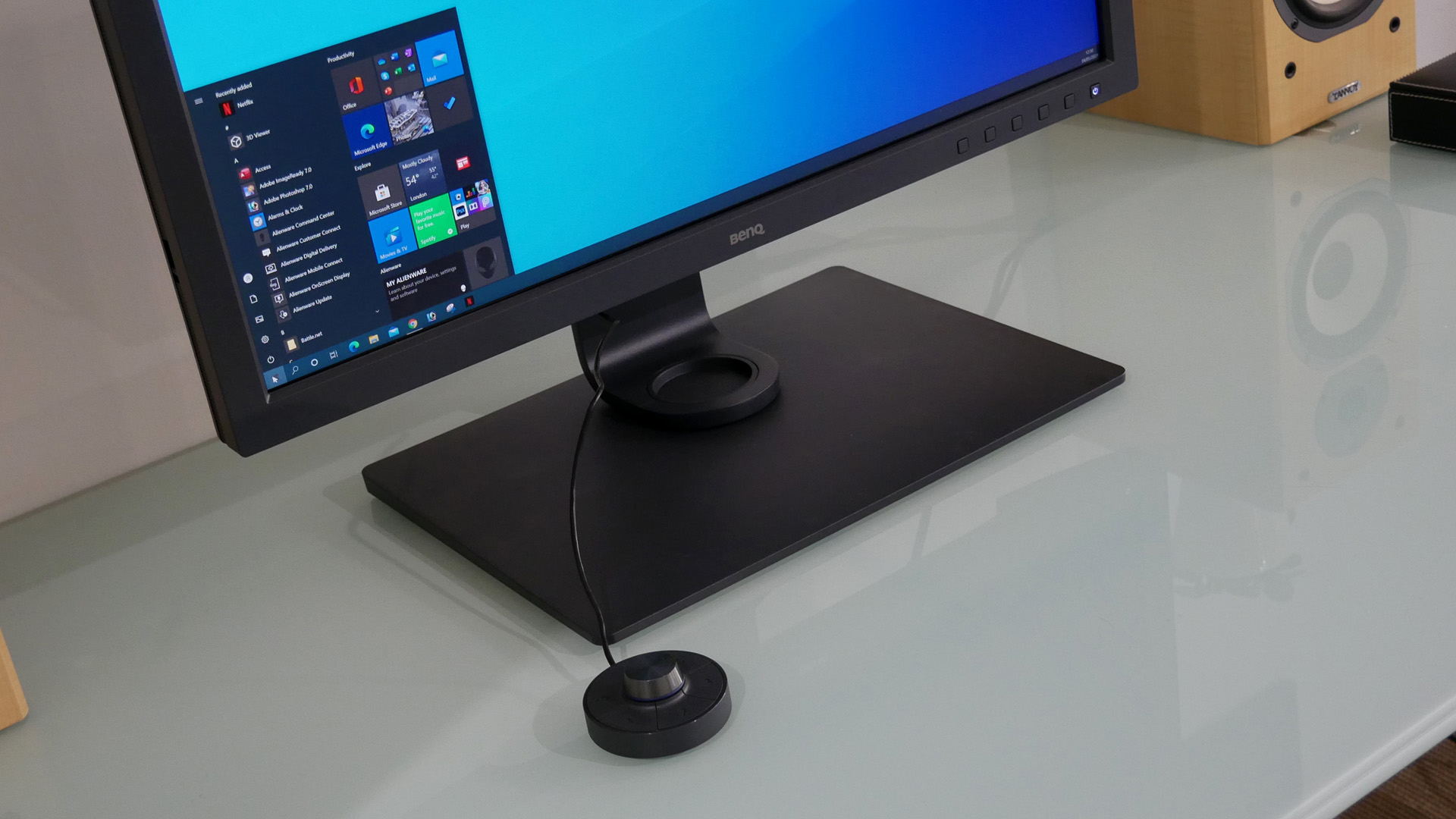
Price and availability
At $1,099 in the US and £964 in the UK, the BenQ SW271C is significantly pricier than an entry level 4K IPS monitor. Indeed, it’s more expensive by far than even a well-specified model with USB-C connectivity, like the Philips 279C9.
However, the SW271C undercuts comparable entry-level professional displays including the EIZO ColorEdge CS2740 and it’s dramatically cheaper than displays from the next class up, such as the EIZO ColorEdge CG2730. So, it actually offers a strong value proposition.
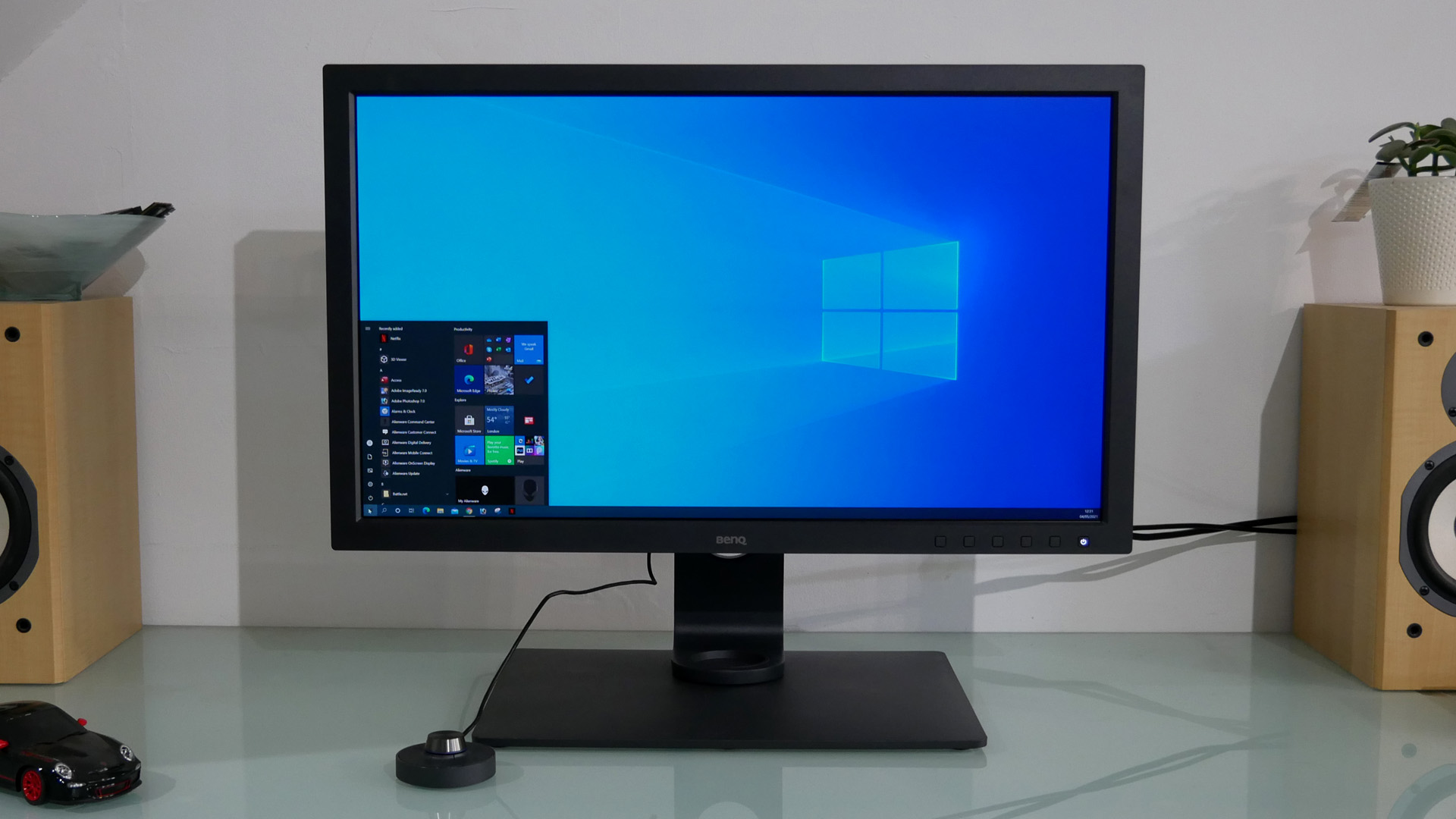
Design and features
The BenQ SW271C is based around a 27-inch IPS 4K panel. It’s a high fidelity item with true 10-bit per channel color and a 16-bit LUT, albeit built into a old school chassis with thick bezels. A sleek slim-bezel monitor this conspicuously is not, though the fully adjustable stand offers excellent ergonomics, including rotation into portrait mode.
BenQ says it’s good for 99 percent of the Adobe RGB space and 90 percent of DCI-P3, which are good but not absolutely spectacular figures in the professional workflow context. That said, really high end alternatives that deliver 98 percent or more of the DCI-P3 space, such as the EIZO ColorEdge CG2730, cost over twice as much.
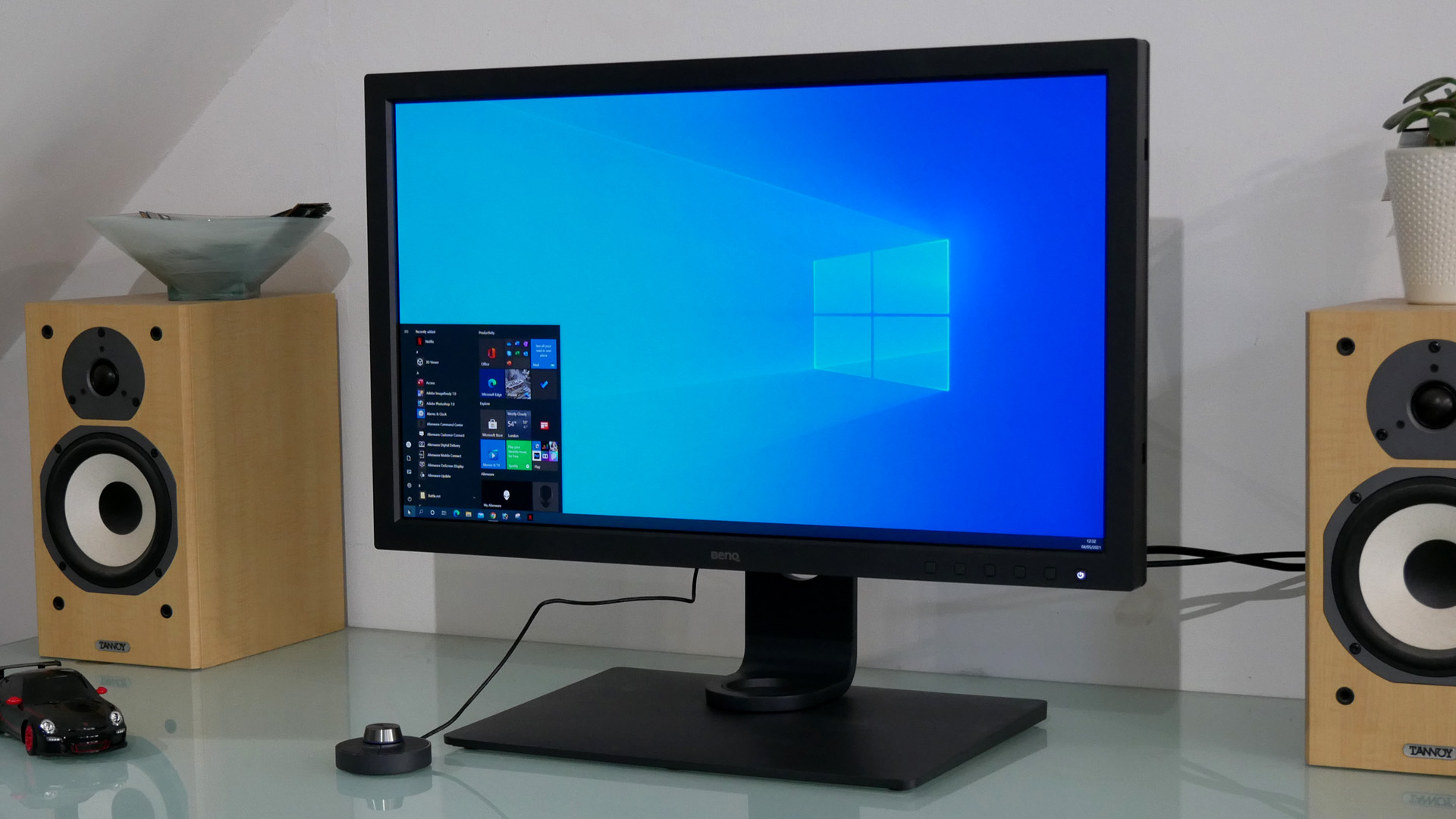
In terms of color spaces supported with ready-baked presets, there’s a long list including Adobe RGB, sRGB, Rec.709, DCI-P3, Display P3 and more. The SW271C can also store three separate fully calibrated profiles and is both Calman Verified status and Pantone Validated.
Adding to the BenQ SW271C’s content creation appeal and value proposition are a wide range of additional features. There’s full hardware calibration courtesy of an integrated image processing chip and leading third party calibration software including Calman and Lightspace is supported. The panel is also both Claman Verified and Pantone Validated.
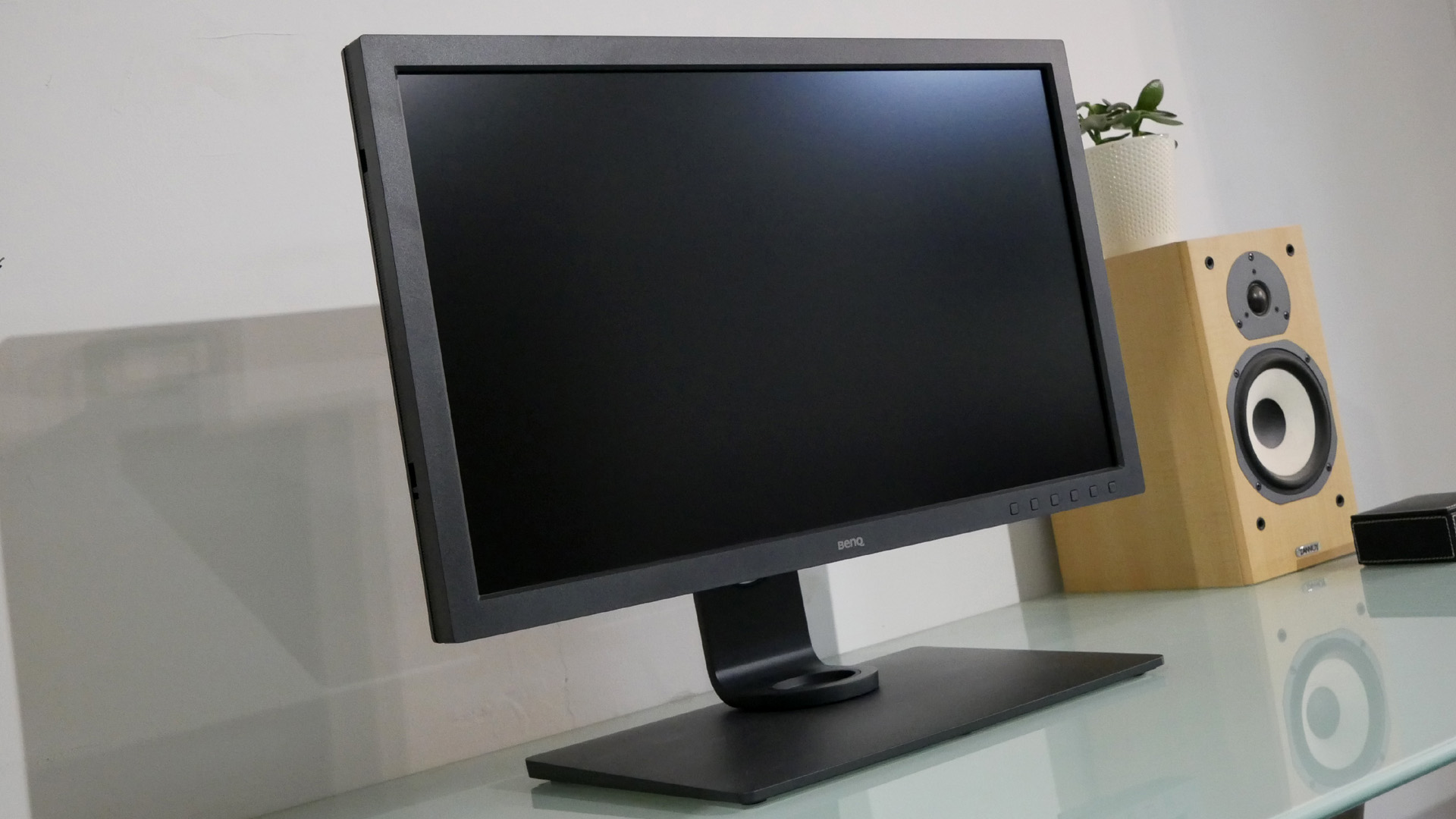
Further features of interest, particularly for video and broadcast workflows, include native 24P, 25P and 30P video preview without pulldown for seamless playback and compatibility with select SDI to HDMI devices including several Black Magic and AJA models.
Panel size 27-inch
Panel type IPS
Resolution 3,840 x 2,160
Brightness 300cd/m2
Contrast 1000:1
Pixel response 5ms
Color coverage 99% AdobeRGB, 100% sRGB 90% DCI-P3
Refresh rate 60Hz
Vesa 100mm x 100mm
Inputs DisplayPort 1.4, HDMI 2.0 x2, USB-C with 60W charging
The SW271C does support the HDR10 and HLG formats. However, with limited peak brightness and no local dimming, actual HDR performance is very limited and this display is not suitable for mastering HDR content.
As for core panel specifications, it’s a 27-inch 16:9 model with a 3,840 by 2,160 4K IPS panel. BenQ claims 1,000 to one static contrast and 5ms pixel response. Brightness is pegged at 300 nits, implying an SDR rather than HDR monitor.
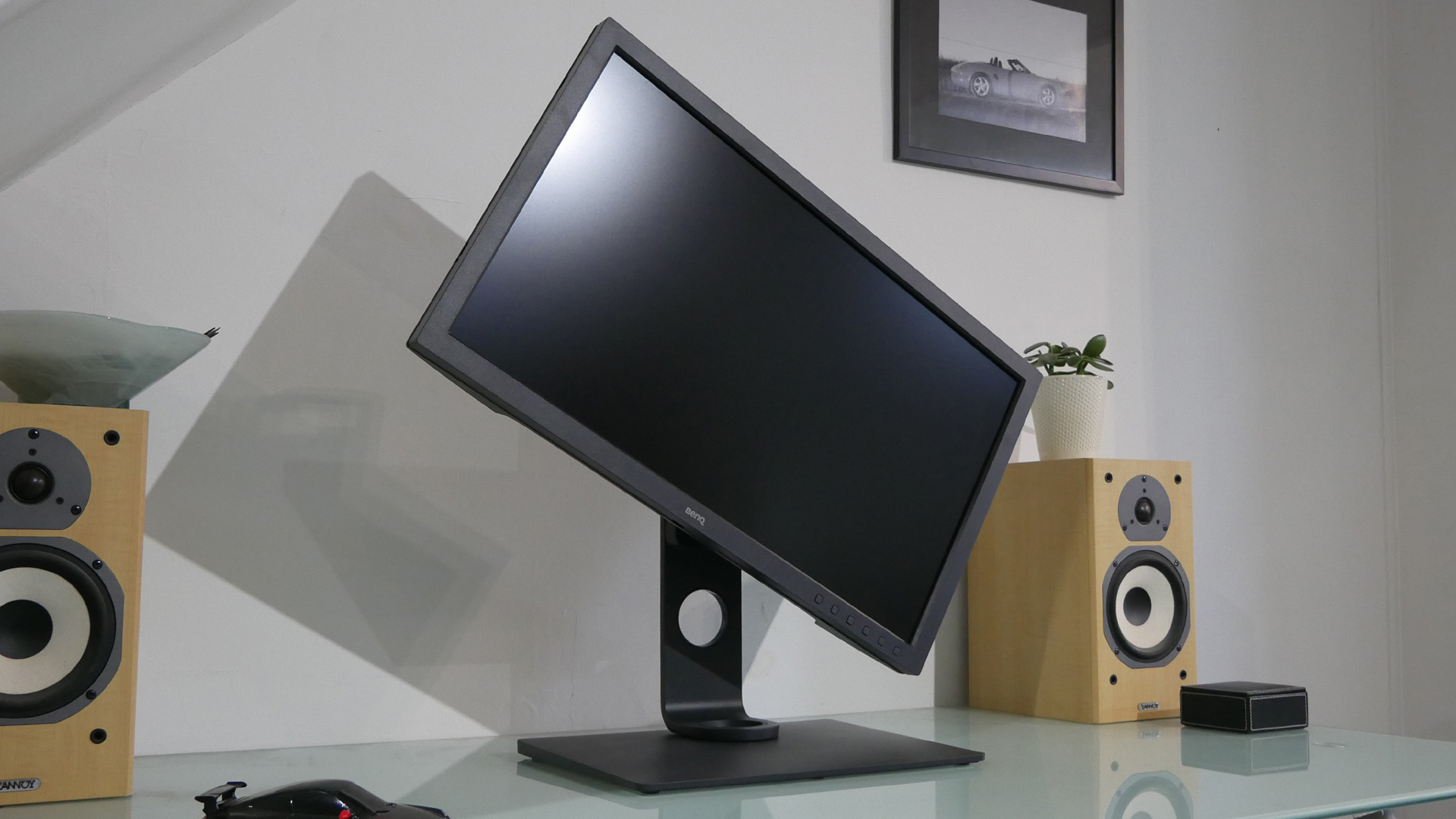
The final feature of particular note is USB Type-C connectivity. That allows for single-cable connectivity including up to 60W of charging for an attached laptop. That’s enough for most thin-and-light laptops. But note that the most powerful laptops and Macbooks draw significantly more power. They will operate with just 60W, but will lose charge during demanding workloads.
Additional hardware features include a detachable shading hood to reduce glare where really careful color matching is required, plus a Hotkey Puck that makes jumping between various color modes or calibration profiles quick and easy.
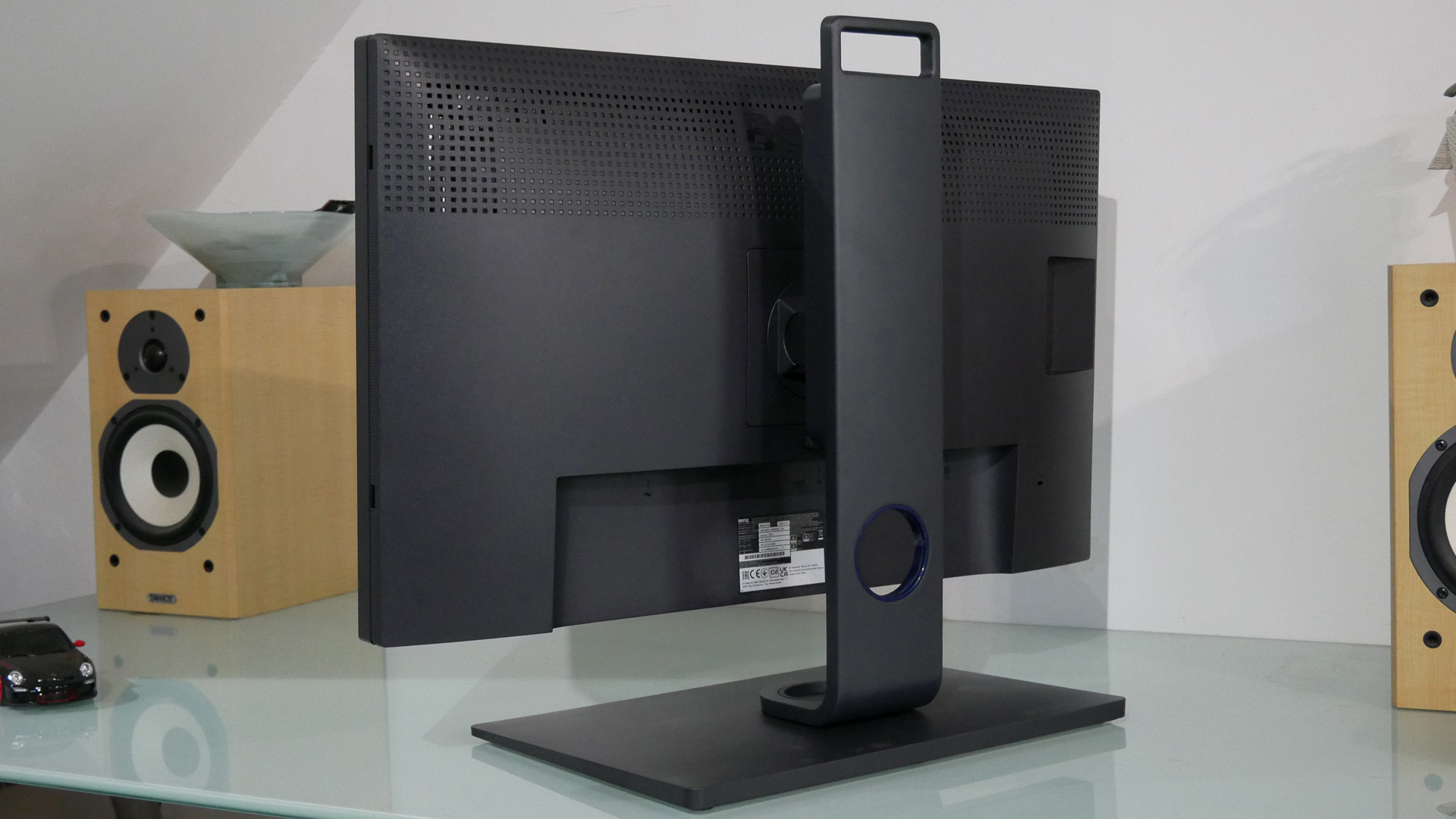
Performance
The BenQ SW271C comes complete with a detailed calibration report showing an average Delta E of just 0.30 for the Adobe RGB space and a maximum Delta E of 1.41, which is pretty impressive. Brightness uniformity across the panel is excellent, too, deviating by just two percent.
Unsurprisingly, then, in Adobe RGB mode this is a very nicely calibrated monitor in subjective terms, with absolutely no visible compression in test images. It’s a very natural and pleasing looking panel.
Likewise, the full 4K pixel grid packed into a 27-inch panel makes for a tight pixel pitch and lots of detail. Font rendering is crisp and clear. As you’d expect from a modern IPS panel, the viewing angles are excellent.
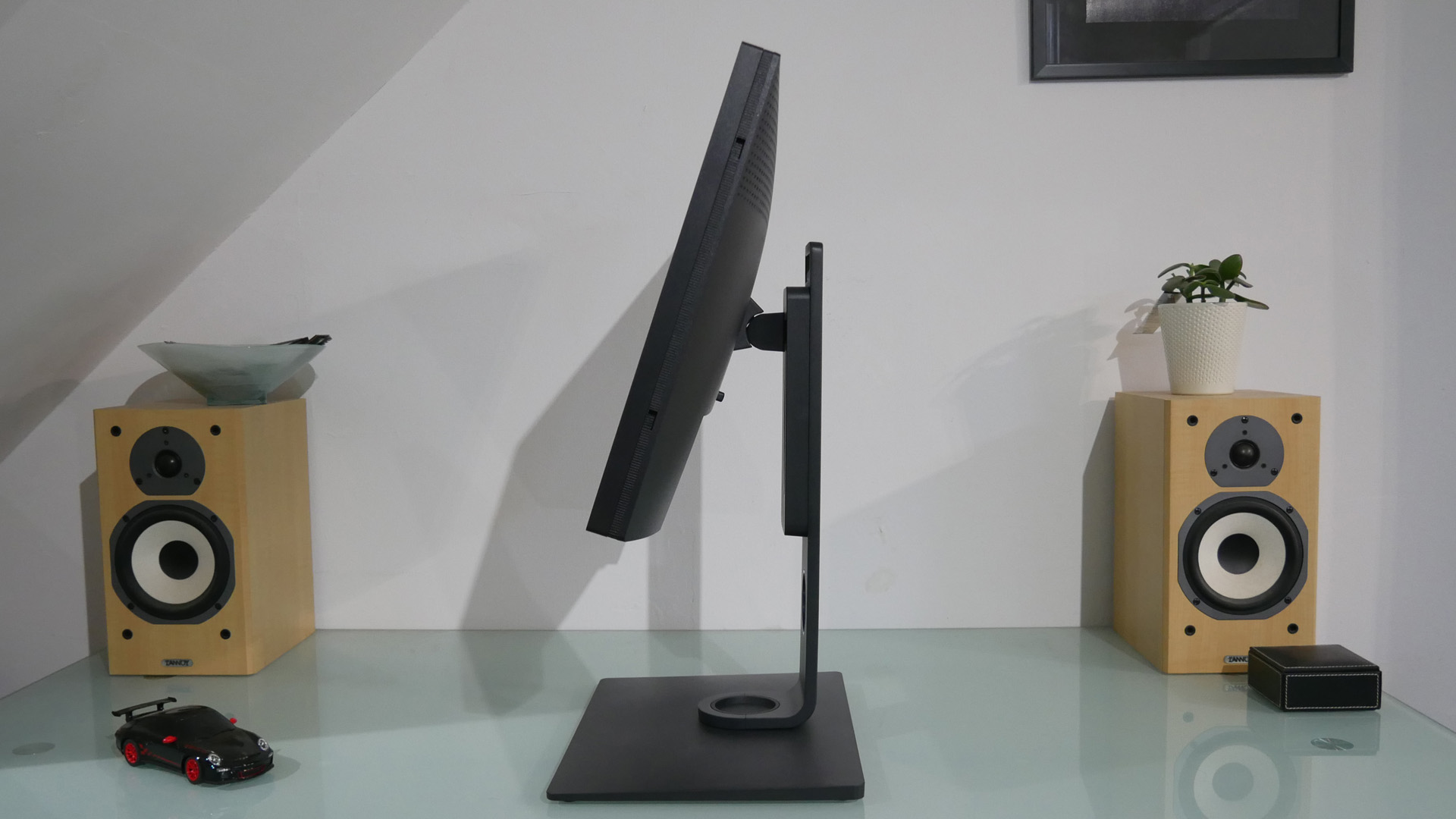
It’s not the brightest or punchiest panel, however, as implied by the 300 nit specification. What’s more, it doesn’t handle SDR content well when operating in HDR mode, so jumping between modes will likely be required for most users. Indeed, HDR performance generally is a weak point thanks to limited brightness and no local dimming support. Similarly, contrast performance is merely good rather than outstanding.
The pixel response is also decent for this class of display, though there are no configurable overdrive settings available in the OSD menu. If you wanted to game on the BenQ SW271C, you absolutely could. Obviously, were that a primary concern, there are better options at this price point.
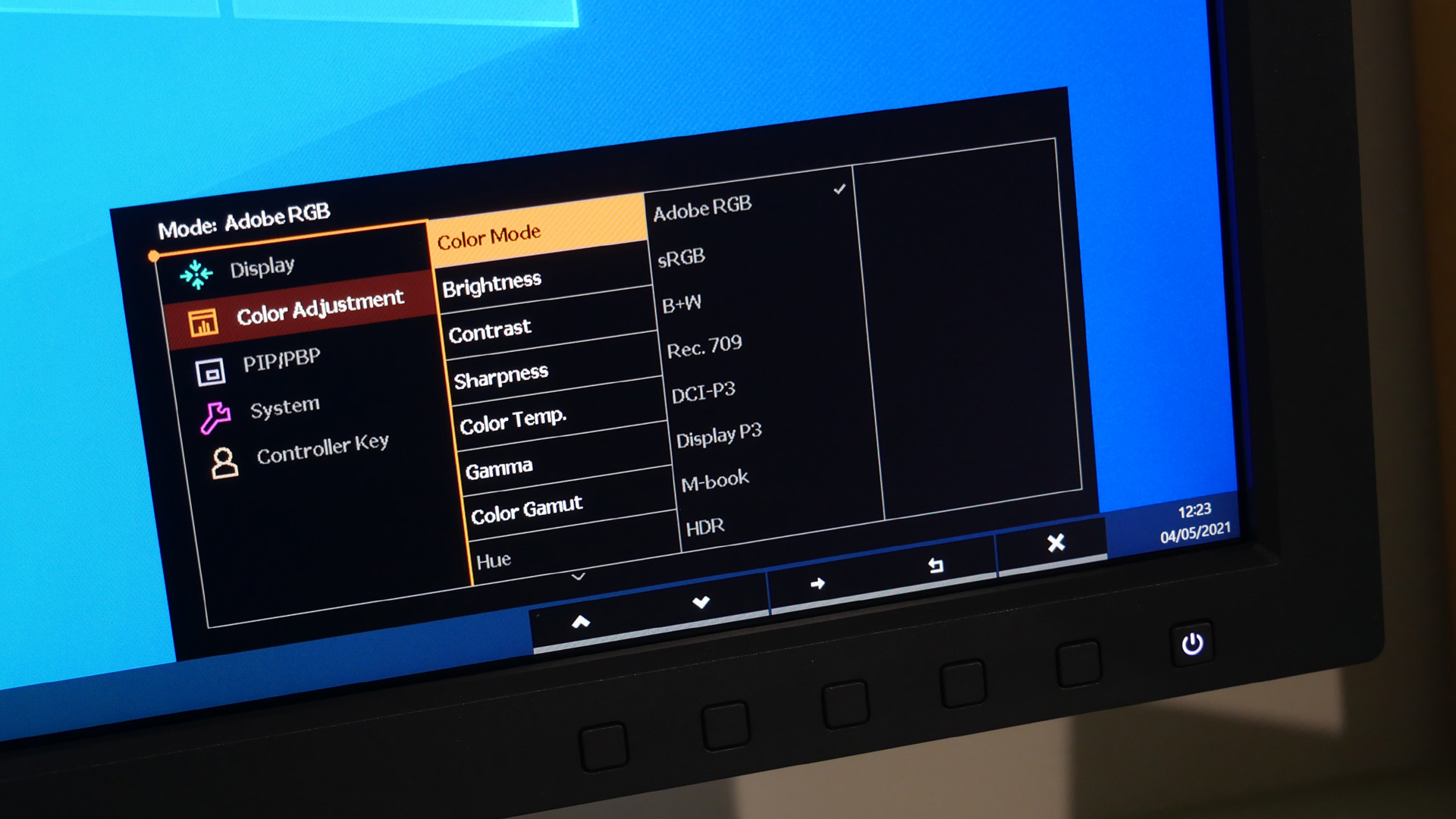
Verdict
The BenQ SW271C is attempting to slip into a niche between conventional productivity panels and true professional-class monitors designed for critical content creation. It’s a fairly fine balance to strike, but BenQ has done a pretty good job.
Overall, the content creation feature set is strong thanks to hardware calibration support, Pantone Validation, 10-bit per channel color, a 16-bit LUT, lots of color space presets and more. The inclusion of USB-C with charging ensures it’s slick and easy to use with laptop PCs and Macbooks.
On the downside, it lacks true HDR support and color coverage is limited in a professional video production context. But if your workflows are such that you can live with or aren’t limited by those provisos, the BenQ SW271C should be on your shortlist and offers a strong overall value proposition.
- We've featured the best business smartphones.
Technology and cars. Increasingly the twain shall meet. Which is handy, because Jeremy (Twitter) is addicted to both. Long-time tech journalist, former editor of iCar magazine and incumbent car guru for T3 magazine, Jeremy reckons in-car technology is about to go thermonuclear. No, not exploding cars. That would be silly. And dangerous. But rather an explosive period of unprecedented innovation. Enjoy the ride.
